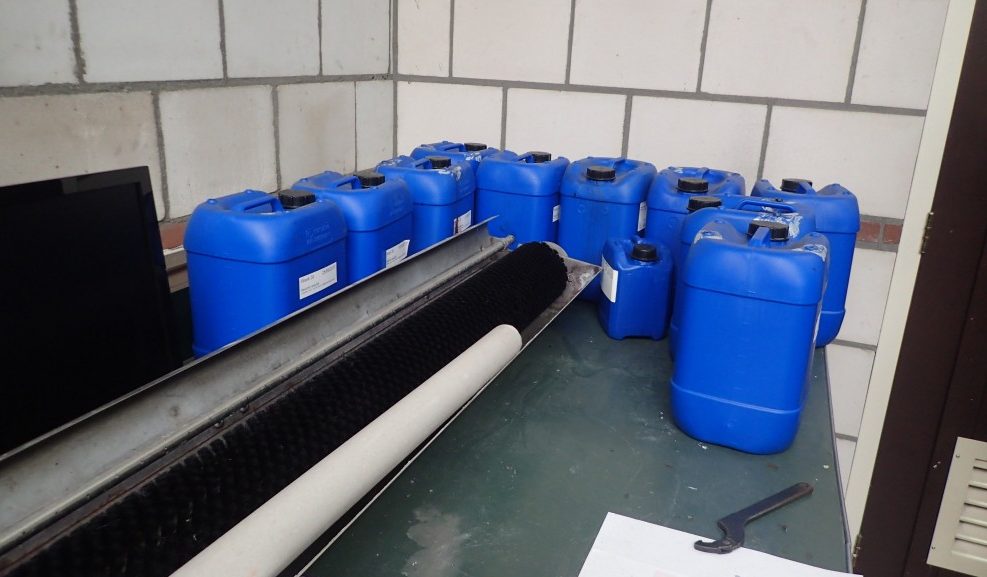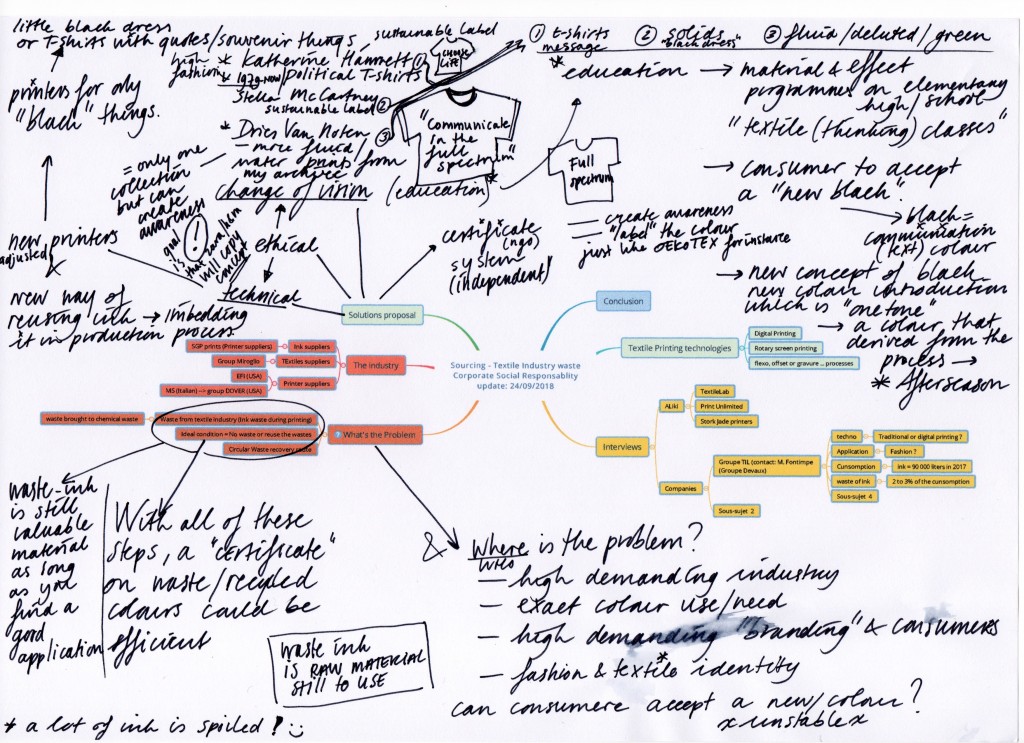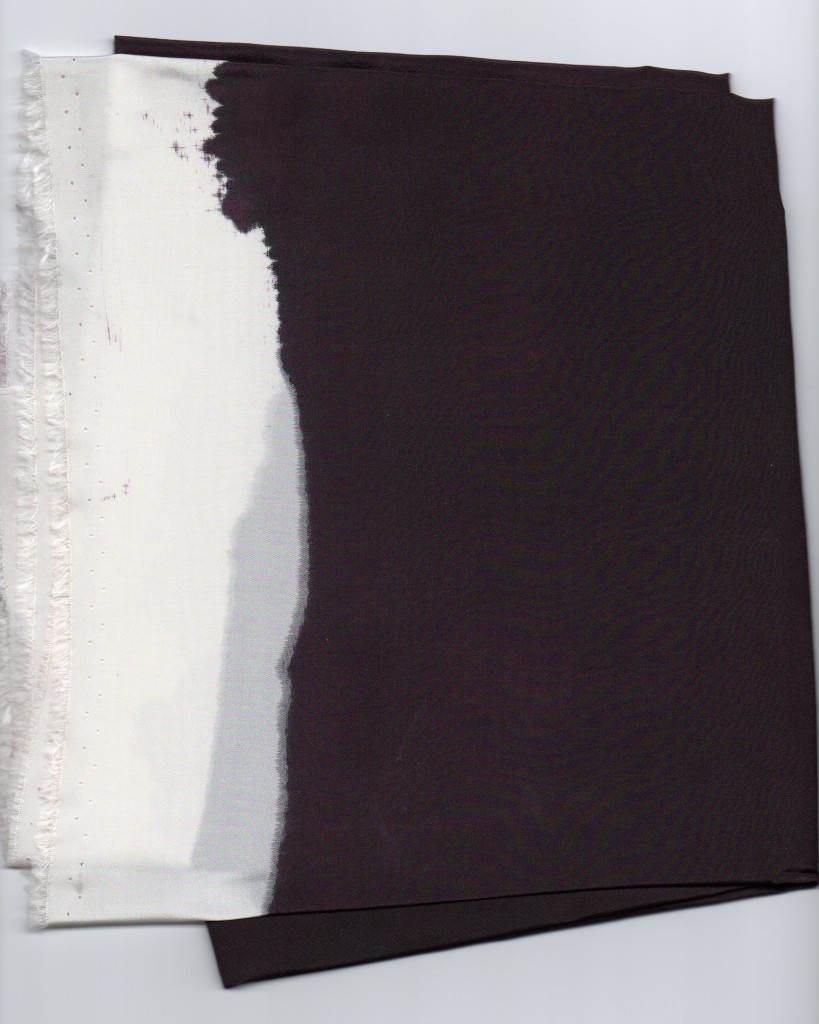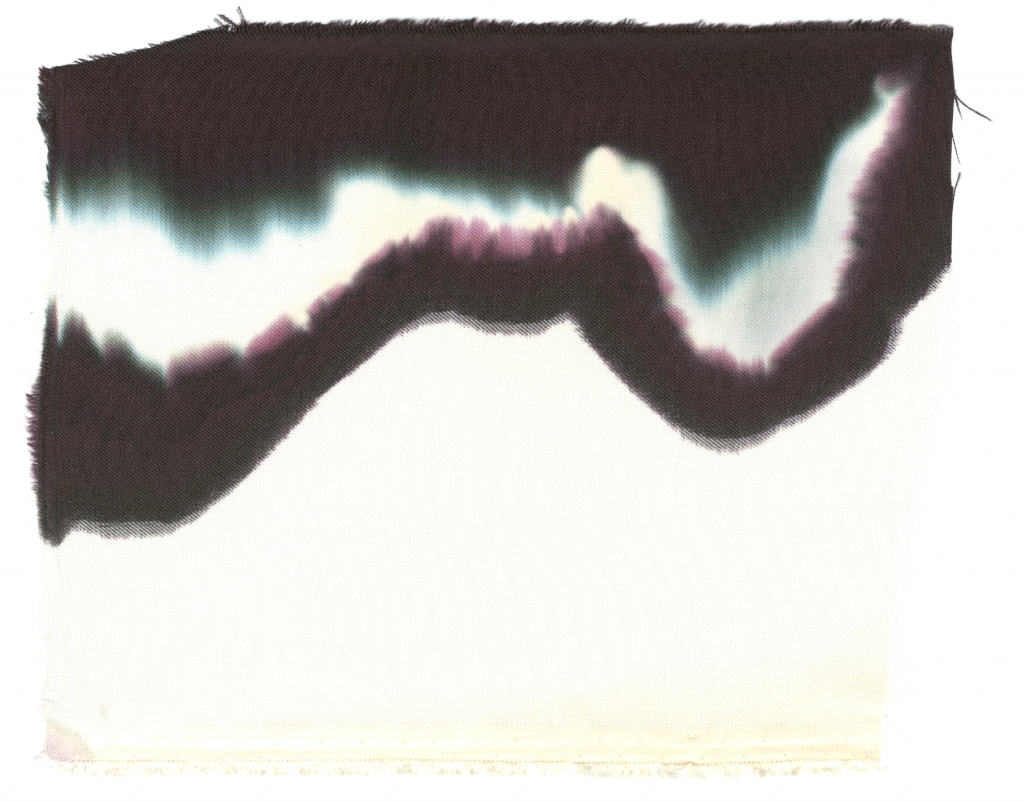
To have a more practical grip on the execution of the overall Afterseason research I formed the concept of Onetone.
Onetone gives the waste ink a ‘label’ in order to become a tool/ material to start using in the textile- and fashion industry. With Onetone a significant mental shift on colour, specifically on the use of black in the fashion consumption can be produced. Black can be left for Onetone™, a dark purple sustainable colour.
The solution aims to reduce the volume of wasted ink, now still chemical waste but valuable raw material. The textile digital printing costs can be optimised (less waste and “free” raw material) by introducing a new colour that can replace the colour black there/in a context where suitable and possible.



Fig. 3 Textile coloured with the residual ink.
 Fig. 4 This textile experiment shows the darkness of the ink and the colours that arise due to capillary effect after adding some water. This shows there is ‘colour’ in the black ink.
Fig. 4 This textile experiment shows the darkness of the ink and the colours that arise due to capillary effect after adding some water. This shows there is ‘colour’ in the black ink.
 Andy Goldsworthy, Rain shadows, 1984
Andy Goldsworthy, Rain shadows, 1984
Reference action that parallels my question what our imprint on earth is, and how to reduce it, or give it another shape.